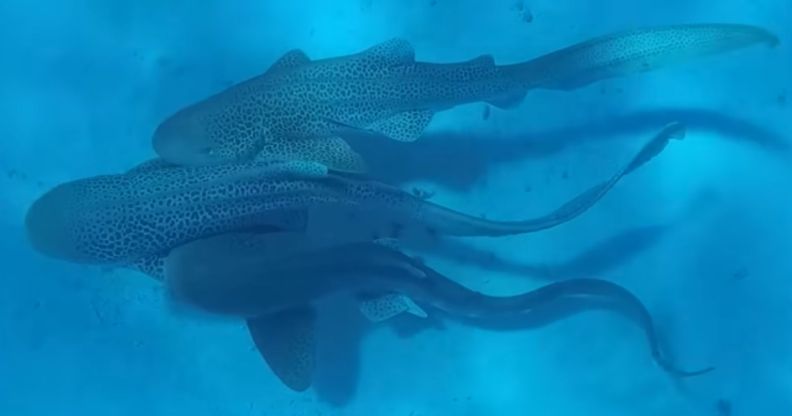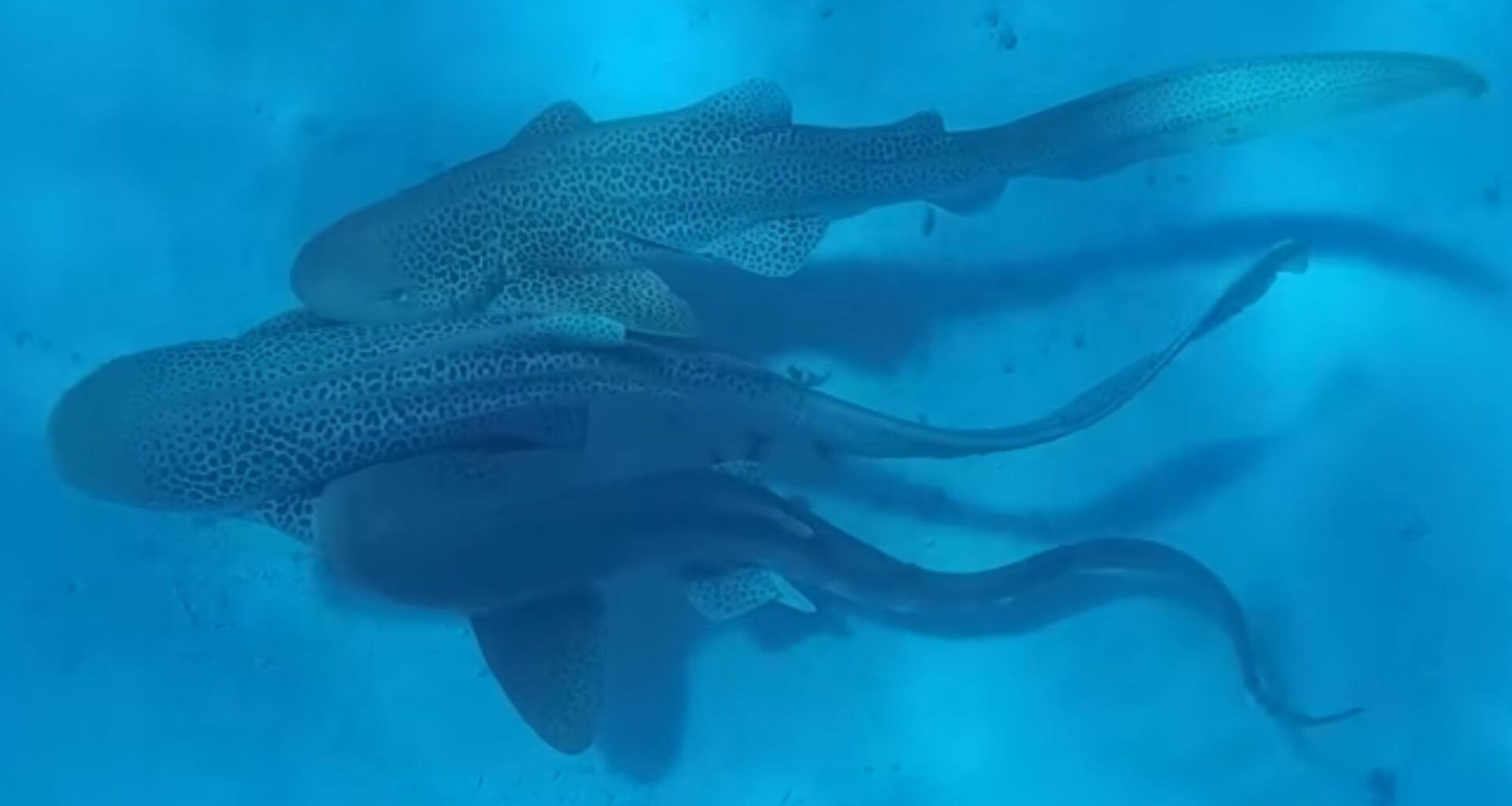
The recording is believed to be the first sighting of its kind. (YouTube/UniSC)
Marine biologists in Australia have observed what is believed to be the first instance of leopard sharks engaging in a two-male, one-female threesome.
While snorkelling off the coast of New Caledonia, a French collectivity in the south west Pacific Ocean, Dr Hugo Lassauce, from the University of the Sunshine Coast, spotted the three sharks. “I thought, ‘Something is going to happen, I’m staying here with my GoPros [to record it]’,” he said. “An hour later, it finally happened.”
Sadly, it was all over rather too quickly and the males appeared tired. “[They] lost all their energy and lay immobile on the bottom while the female swam away actively,” Lassauce said.
@pinknews A ‘wild throupling’ between one female and two male leopard sharks has been caught on camera for the first time in history. A University of the Sunshine Coast researcher documented the rare shark mating sequence in the wild. Dr Lassauce, a marine biologist and ecologist who collaborates with Noumea’s Aquarium des Lagons recalled what happened moments after the risqué moment: “I told my colleague to take the boat away to avoid disturbance and I started waiting on the surface, looking down at the sharks almost motionless on the sea floor. “I waited an hour, freezing in the water, but finally they started swimming up. It was over quickly for both males, one after the other. The first took 63 seconds, the other 47. “Then the males lost all their energy and lay immobile on the bottom while the female swam away actively.” The team celebrated the scientific and conservation significance of his video as soon as he swam back to the boat. #LeopardShark #Sealife #QueerAnimals ♬ Magical Wind – DJ BAI
The mating behaviours, including “prolonged pro-copulation positioning, male grasping of the female’s fins and tail, copulatory thrusting and clasper use”, were consistent with a study published earlier this month.
Dr Christine Dudgeon, a co-author of the study, said the recording could help with artificial insemination research that may save the endangered species.
“From a genetic diversity perspective, we want to find out how many fathers contribute to the batches of eggs laid each year by females,” she said. “It’s surprising and fascinating that two males were involved sequentially on this occasion.
“To see it with an endangered species – and film the event – was so exciting that we started cheering.”
Share your thoughts! Let us know in the comments below, and remember to keep the conversation respectful.
